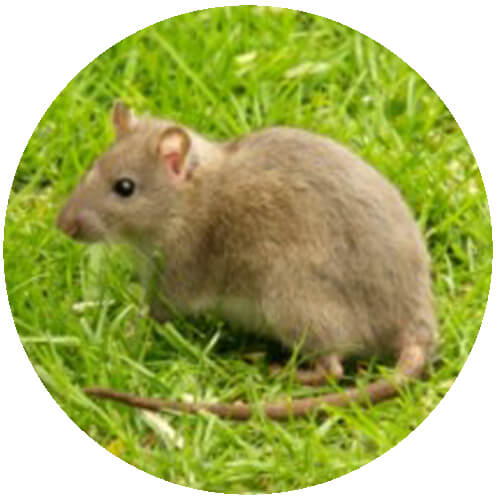Packrats Identification
Look like Large Deer Mouse or Giant Hamster

Packrats get their name due to their behaviours of collecting many different natural and manmade items and storing them in middens near their nests. Many species of this rat have adapted well to buildings and invade different areas of homes. Its large size means it can quickly damage furniture or gnaw on wiring or conduits thus causing electrical shorts or other safety hazards.
Identification
As far as rats go, Packrats are an attractive mammal and are often described by field professionals as a large looking deer mouse or giant hamster. The Packrat is about the same size as the Norway rat but there are a few key differences. Packrats have large ears, bulging black eyes, very long, soft fine fur and hairy tails. Upon closer inspection, one can notice conspicuous facial whiskers (vibrissae).
- Rat Fact:
- Packrats large size means it can quickly damage furniture or gnaw on wiring or conduits thus causing electrical shorts or other safety hazards.
Habitat
Packrats are widely distributed around North America, of which there are 9 species. Each species is particular to a specific habitat. These rats have adapted well to urban areas and as a result can be found in occupied homes, attics, garages and soffits.
Health Hazards
Packrats have been involved in a number of health hazards. They can carry fleas or ticks which can be vectors for a number of serious diseases such as Lyme disease. At least 6 species of this rat have tested as reservoirs of the trypanosomes that cause Chagas disease.
Reproduction
Packrats are not particularly prolific and thus local populations grow relatively slow. The spring is the peak reproductive season and the average litter contains 2 to 4 pups. Gestation periods are estimated to range from 33 to 43 days. Most females produce one to two litters per year but in optimum conditions can produce up to 5. Behaviorally speaking packrats tend to be solitary animals except during mating and rearing periods. In the wild, however, these rats can live for up to three years.
Food Source
Depending on the species and the locale, woodrats/packrats feed on many different types of foods. In their natural settings, various types of vegetation, seeds, nuts, berries and shoots are eaten. Insects, snails and other small mammals are also taken. Around buildings, however, these rats aptly take advantage of humans and any pet foods available in garages or left behind in summer cabins. Peak activity periods for this species are at night although it is not uncommon to see juveniles during the daytime.
- Rat Fact:
- Packrats get their name due to their behaviours of collecting many different natural and manmade items and storing them in middens near their nests.
Solutions Pest Control
Pest Education Experts
Our knowledgeable pest detectives are ready to answer your questions (during office hours). We are happy to talk to people and walk them through the steps to identify the pest issue and determine if a service call will give them peace of mind.
We will spend will as much time as needed, to educate you on the signs and characteristics of the most common pests.


